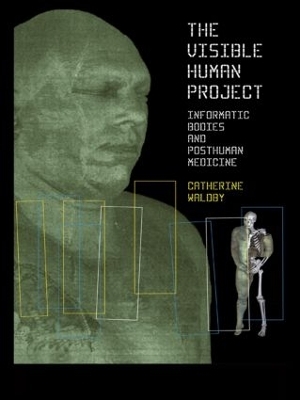
The Visible Human Project
Informatic Bodies and Posthuman Medicine
Seiten
2000
Routledge (Verlag)
978-0-415-17406-0 (ISBN)
Routledge (Verlag)
978-0-415-17406-0 (ISBN)
The Visible Human Project examines how the VHP provides visual access to every organ of the body, viewable from every angle and capable of being manipulated to simulate living processes like respiration.
The Visible Human Project is a critical investigation of the spectacular, three-dimensional recordings of real human bodies - dissected, photographed and converted into visual data files - made by the US National Library of Medicine in Baltimore. Catherine Waldby uses new ideas from cultural studies, science studies and social studies of the computer to situate the Visible Human Project in its historical and cultural context, and to consider the meanings such an object has within a computerised culture.
In this fascinating and important book, Catherine Waldby explores how advances in medical technologies have changed the way we view and study the human body, and places the VHP within the history of technologies such as the X-ray and CT-scan, which allow us to view the human interior.
Bringing together medical conceptions of the human body with theories of visual culture from Foucault to Donna Haraway, Waldby links the VHP to a range of other biomedical projects, such as the Human Genome Project and cloning, which approach living bodies as data sources. She argues that the VHP is an example of the increasingly blurred distinction between `living' and 'dead' human bodies, as the bodies it uses are digitally preserved as a resource for living bodies, and considers how computer-based biotechnologies affect both medical and non-medical meanings of the body's life and death, its location and its limits.
The Visible Human Project is a critical investigation of the spectacular, three-dimensional recordings of real human bodies - dissected, photographed and converted into visual data files - made by the US National Library of Medicine in Baltimore. Catherine Waldby uses new ideas from cultural studies, science studies and social studies of the computer to situate the Visible Human Project in its historical and cultural context, and to consider the meanings such an object has within a computerised culture.
In this fascinating and important book, Catherine Waldby explores how advances in medical technologies have changed the way we view and study the human body, and places the VHP within the history of technologies such as the X-ray and CT-scan, which allow us to view the human interior.
Bringing together medical conceptions of the human body with theories of visual culture from Foucault to Donna Haraway, Waldby links the VHP to a range of other biomedical projects, such as the Human Genome Project and cloning, which approach living bodies as data sources. She argues that the VHP is an example of the increasingly blurred distinction between `living' and 'dead' human bodies, as the bodies it uses are digitally preserved as a resource for living bodies, and considers how computer-based biotechnologies affect both medical and non-medical meanings of the body's life and death, its location and its limits.
Catherine Waldby is a Lecturer in the Communications and Cultural Studies Program at Murdoch University, Australia.
List of figures, Acknowledgments, List of acronyms, 1 The Visible Human Project: an initial history, 2 Posthuman spectacle, 3 Theatres of violence: the anatomical sacrifice and the anatomical trace, 4 Virtual surgery: morphing and morphology, 5 IatroGenesis: digital Eden and the reproduction of life, 6 Revenants: death and the digital uncanny, 7 Technogenesis: the posthuman visible, Notes, Bibliography, Index
| Erscheint lt. Verlag | 8.6.2000 |
|---|---|
| Verlagsort | London |
| Sprache | englisch |
| Maße | 156 x 234 mm |
| Gewicht | 370 g |
| Themenwelt | Geisteswissenschaften ► Geschichte |
| Informatik ► Grafik / Design ► Digitale Bildverarbeitung | |
| Studium ► 1. Studienabschnitt (Vorklinik) ► Physiologie | |
| Naturwissenschaften ► Biologie | |
| Sozialwissenschaften ► Soziologie | |
| ISBN-10 | 0-415-17406-6 / 0415174066 |
| ISBN-13 | 978-0-415-17406-0 / 9780415174060 |
| Zustand | Neuware |
| Haben Sie eine Frage zum Produkt? |
Mehr entdecken
aus dem Bereich
aus dem Bereich
Modelle für 3D-Druck und CNC entwerfen
Buch | Softcover (2022)
dpunkt (Verlag)
CHF 48,85
alles zum Drucken, Scannen, Modellieren
Buch | Softcover (2024)
Markt + Technik Verlag
CHF 34,90


